The Potala Palace
The Potala Palace
This ancient architectural complex is considered a model of Tibetan architecture. Located on the Red Hill in Lhasa, Tibet, it is 3,700 meters above sea level and covers an area of over 360,000 square meters, measuring 360 meters from east to west and 270 meters from south to north. The palace has 13 stories, and is 117 meters high.
In 641, Songtsan Gambo, ruler of the Tubo Kingdom, had the Potala Palace built for Princess Wencheng of the Tang Dynasty, whom he was soon to marry. This structure was later burned to the ground during a war and was rebuilt in the 17th century by the Fifth Dalai Lama. Repeated repairs and expansions until 1645 finally brought the palace to its present scale. Over the past three centuries, the palace gradually became a place where the Dalai Lama lived and worked and a place for keeping the remains of successive Dalai Lama.
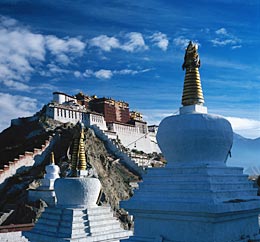 |
In 1994, the palace joined the list of world cultural heritage sites.
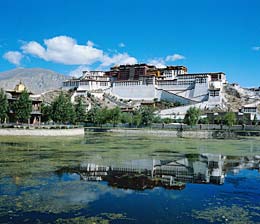 |
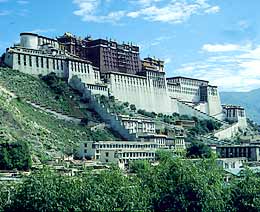 |
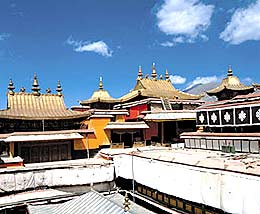 |
The Jokhang Monastery
The Jokhang Monastery, an example of the earliest architecture in Tibet, can claim to be the center around which the city of Lhasa developed. The legend goes that Princess
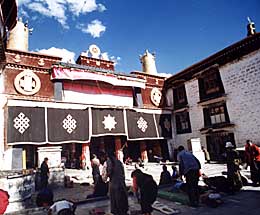 |
On November 30, 2000, the UNESCO World Heritage Committee listed the Jokhang Monastery on the World Heritage List as a part of the historical assemblage of the Potala Palace.
Norbulingka Park
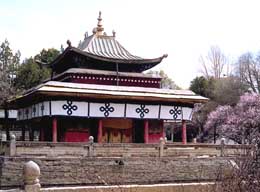 |
Situated in the western suburbs of Lhasa, Norbulingka Park was built in the middle of the 18th century during the reign of the 7th Dalai Lama and served as the Summer Palace of Dalai Lamas where they handle political affairs, practiced religious activities and spent holidays. Traditionally the Dalai Lamas would leave the Potala Palace every spring and spend the summer in Norbulingka.
Lingka in Tibetan means a beautiful place with trees and lawns, and Norbu means treasure. In addition to its beautiful environment, Norbulingka boasts many palaces, pavilions, various kinds of flowers as well as a lake and a zoo.
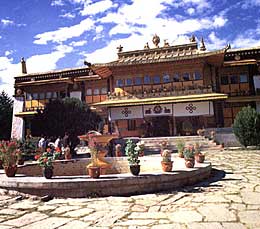 |
In December 2001, Norbulingka Park was entered into the World Heritage List as a part of the historical assemblage of Potala Palace.
The Potala Palace Management Office
Tel: 86-891-6832362
Norbulingka Park Management Office
Tel: 86-891-6822644
(China.org.cn September 12, 2003)
 0
0 






